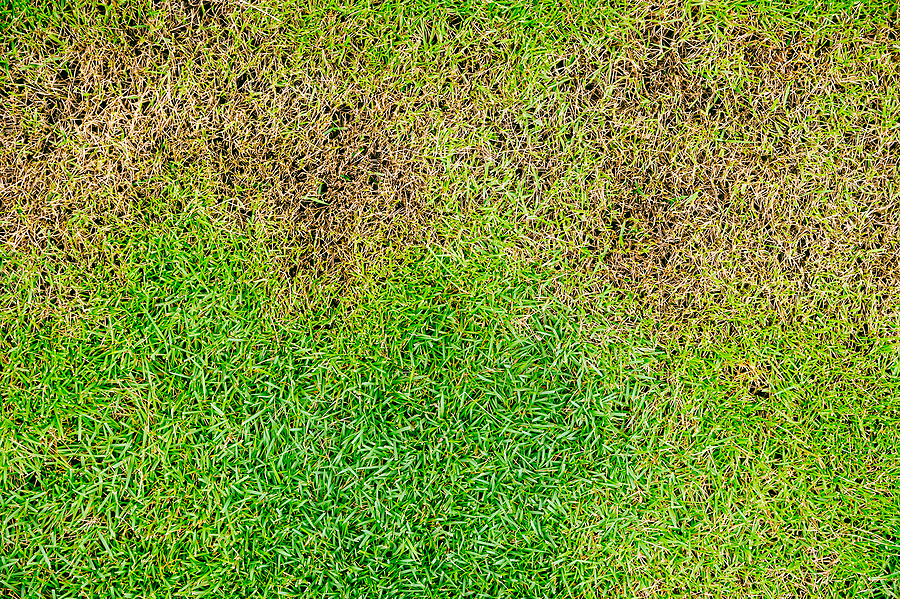Is it Drought or Disease Making Your Lawn Brown?

Summer comes with lots of fun in the sun. But the seasonal sizzle can do a number on your lawn.
Has your lush, green grass started to turn brown? Have crispy, dry patches cropped up across your yard?
If so, all is not lost. You can turn around the stress summer has brought to your lawn.
Why is My Lawn Brown?
The first step to turn your yard around is to identify the cause. Brown grass usually indicates your grass isn’t getting enough of the water or nutrients it needs to maintain its peak appearance. Drought and disease are typically the leading culprits. However, they aren’t the only ones. Here are some reasons behind brown grass:
- Drought – Drought is one of the most common causes of grass death. Lawns require one inch of water per week from rain or irrigation.
- Thatch – Thatch is a layer of decayed grass blades that can accumulate to the point where it chokes out healthy grass.
- Too Much Fertilizer – Most fertilizers are salts with nutrients added. Using too much damages the roots of grass, resulting in brown patches.
- Insects – Look for holes in leaves and blades of grass if your suspect insects are the problem. Grubs, chinch bugs, nematodes, mole crickets, mites, leafhoppers, and various larvae can all wreak havoc on your yard.
- Fungus – Lawn fungus thrives in hot, humid conditions. Fungus can create round patches of brown grass up to several feet in diameter.
If there are random areas or patches of brown grass across your lawn, this may mean the grass has died there. However, the grass has usually gone dormant if your entire lawn is the same brown color. Proper irrigation may revive it.
Importance of Irrigation
Lack of water is the leading cause of a brown lawn. And water can fix it. But it must be done correctly. Simply turning on a hose is not enough.
It is preferable to water deeply a few times per week rather than a little every day. A good soaking in about an inch of water will help the grass roots penetrate the soil and grow deeper. It’s best to do it early in the day to allow for evaporation from the grass blades. Also be sure to reach all the spots of your yard so your lawn is completely watered.
Once irrigation is properly provided, grass that is dormant may turn around in three to four weeks. However, you may need to reseed if your lawn has gone completely dormant.
Consider an Irrigation System
Consistency is the key to keeping your lawn healthy with water. Light, infrequent watering can cause more stress to your lawn. Perhaps it is time to consider investing in an irrigation system. If you already have a system installed, it’s a good idea to have it professionally maintained so it’s always in good working order.
A sprinkler system is convenient. You can use a timer, so it automatically irrigates your yard whether you are there or not. It can also be programmed to water at the time that is best for your lawn, between 5am and 9am. Evaporation is reduced by watering early in the morning before the sun rises.
In addition, a professionally maintained sprinkler system will adequately irrigate your entire lawn with no missed spots.
A lawn irrigation system could be just what you need to prevent your yard from falling victim to the summer sizzle. Sprinkler Pro can help. Our experienced technicians are highly knowledgeable about preforming regular maintenance on both residential and commercial sprinkler systems. With a properly working sprinkler system, you’ll keep your grass lush and green. Contact us to discuss what maintenance options are available for your system.
Contact Us

